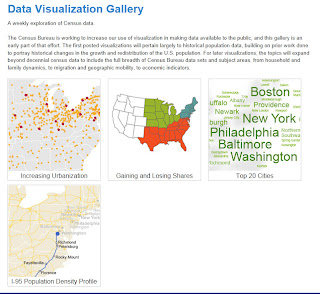The U.S. Census Bureau schedule for the release of the American Community Survey data for 2011 starting in September of 2012 is now available. Included below are details on each release so be sure to make your calendars as this data will be available via the American FactFinder website once the data is released.

2011 American Community Survey — The Census Bureau plans to release one-year estimates from the 2011 ACS on Thursday, Sept. 20, 2012. The ACS produces estimates for numerous social, economic and housing characteristics including language, education, the commute to work, employment, mortgage status and rent, as well as income, poverty and health insurance. Embargo subscribers will have access on an embargoed basis to the estimates beginning Tuesday, Sept. 18. Estimates will be available for the nation, all 50 states, the District of Columbia, Puerto Rico, every congressional district, every metropolitan area, and all counties and places with populations of 65,000 or more. In June 2011, the ACS annual sample size was increased from 2.9 million to 3.54 million addresses, which should result in an improvement in the reliability of the estimates.
On Sept. 20, the Census Bureau will also release the first in a series of short briefs that analyze a wide range of topics. Additional briefs will follow. Each year, the Census Bureau varies the topics of these short briefs. 2009-2011 American Community Survey — The Census Bureau plans to release the three-year estimates from the 2009-2011 ACS on Oct. 25, 2012. Embargo subscribers will have access to the estimates up to 48 hours in advance of the public release. The estimates will cover all geographic areas with populations of 20,000 or more. They will include the first set of three-year estimates for field of degree of bachelor’s degree holders.
2009-2011 American Community Survey — The Census Bureau plans to release the three-year estimates from the 2009-2011 ACS on Oct. 25, 2012. Embargo subscribers will have access to the estimates up to 48 hours in advance of the public release. The estimates will cover all geographic areas with populations of 20,000 or more. They will include the first set of three-year estimates for field of degree of bachelor’s degree holders.  2007-2011 American Community Survey — The Census Bureau plans to release the five-year ACS estimates covering 2007-2011 on Dec. 6, 2012. Embargo subscribers will have access to the estimates on Dec. 4. These estimates are available for all areas regardless of population size, down to the block group.
2007-2011 American Community Survey — The Census Bureau plans to release the five-year ACS estimates covering 2007-2011 on Dec. 6, 2012. Embargo subscribers will have access to the estimates on Dec. 4. These estimates are available for all areas regardless of population size, down to the block group.
The ACS Public Use Microdata Sample (PUMS) files for each of the three sets of statistics will be released one to two months after each public release.
Overviews provided by U.S. Census Bureau







